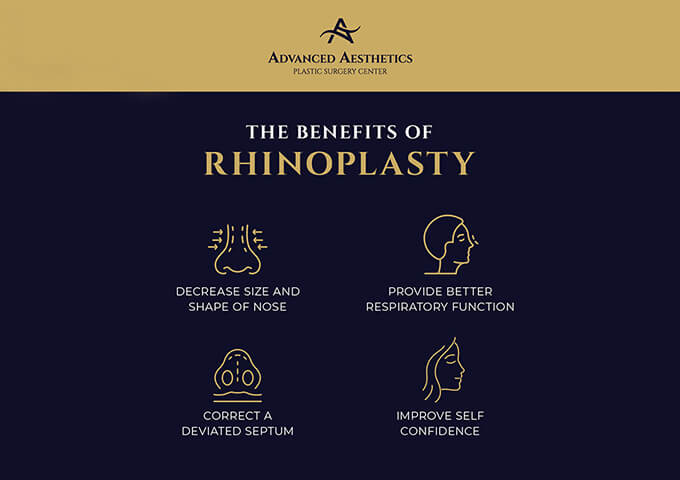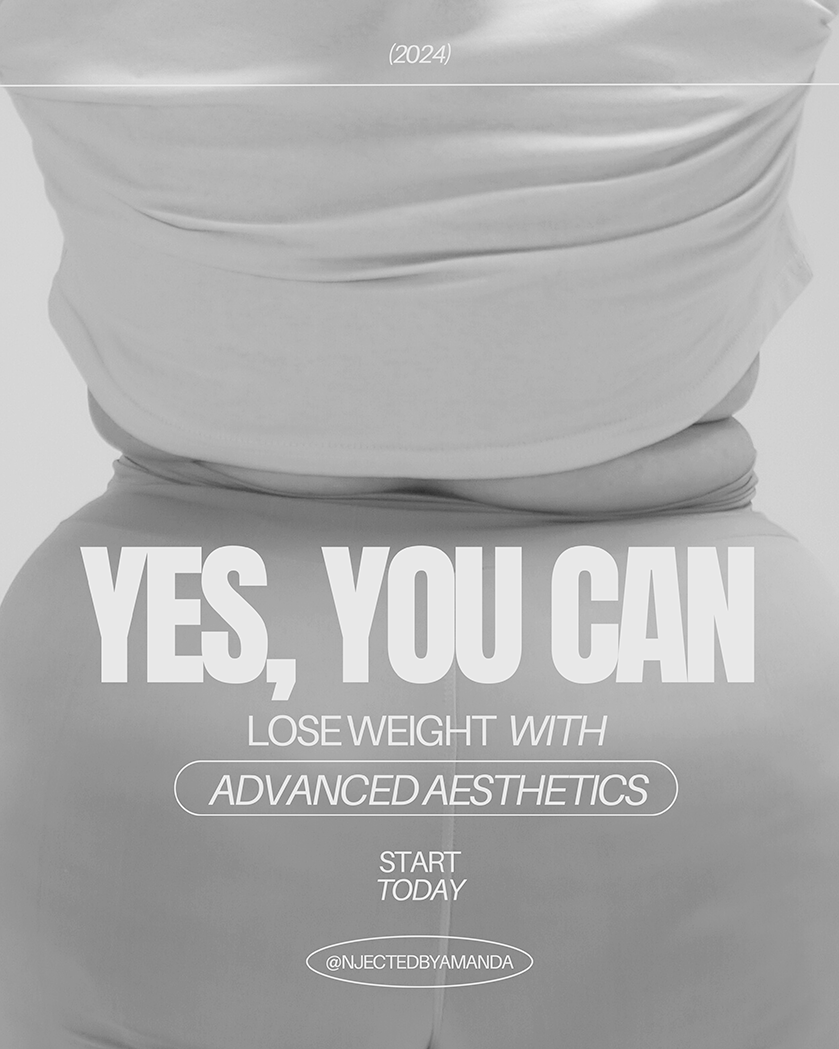
You look in the mirror, and you do not like the shape of your nose.
Though we are often our own worst critics when we see our reflections or photos of ourselves, disliking the shape of your nose is a widespread aesthetic concern. The nose is a central focal point of the face and plays a big role in facial symmetry, which is a well-known standard for beauty and attraction. When you do not feel as though your nose is complementing your face, it can be difficult to find confidence in the facial features that you do like.
Perhaps you think the tip of your nose is too long or too short. Maybe the bridge of your nose is too high or too low. Maybe you think your nostrils are too large. Whatever your concerns, the expert facial plastic surgeons at Advanced Aesthetics Plastic Surgery Center can help you identify what you dislike about your nose, and then they can help you fix it. Our surgeons have years of experience performing rhinoplasties in the Atlanta metro to improve the appearance and function of your nose. We can perform purely cosmetic rhinoplasties, change the shape of your nose and fix a deviated septum with a rhinoplasty and septoplasty, or perform septoplasty alone to address nasal breathing difficulties without altering the appearance of your nose.
A rhinoplasty is a very specific procedure that only addresses the structure and shape of the nose. While it can be combined with other procedures such as facial implants or other facial surgeries, a rhinoplasty alone does not interfere with other parts of your face. If you have other concerns as well, talk to your surgeon about your best options.
That being said, a rhinoplasty can drastically change your look. Facial symmetry centers around the nose, and working with a plastic surgeon to create a new nose that complements your other features can give your whole face a better sense of balance. Even small adjustments like narrowing the bridge or removing a bump can change the way you and others perceive your appearance.
However, we often caution our clients to remember that the perfect nose for your face may be different than the nose you imagine. It is a common misconception that a rhinoplasty can simply reconstruct your favorite nose shape or the nose of a famous person. While it may be technically possible to imitate these noses, your results will be better if your surgeon creates a completely original nose for you that is designed perfectly for your face. Some of the aspects of your nose that a rhinoplasty can change include:
- Bumps, protrusions or humps on the bridge of the nose
- Nostril shape and size
- A deviated septum
- A bulbous or otherwise large tip
- Visual width and length
A rhinoplasty or septoplasty may also be right for you if you have difficulties breathing through your nose due to a deviated septum or severe allergies. During a rhinoplasty, your surgeon can center your septum to maximize airflow through each side of your nose. In the case of severe allergies, nasal filtration structures called turbinates can swell and block the passage of air — these can be reduced in size during a rhinoplasty.
There are two main rhinoplasty techniques — open and closed rhinoplasties — that your surgeon may discuss with you. These techniques mainly differ in that open rhinoplasties use an additional incision along the columella, the cartilage at the base of your septum between your nostrils. This gives your surgeon greater and more detailed access to the nasal tip and your nose’s inner structures, allowing for more precise adjustments particularly to the tip and the nasal bones. Closed rhinoplasties avoid this extra incision, which shortens your time in surgery and recovery, minimized scarring and significantly lessens swelling; however, this technique is best suited for clients whose concerns are not centered on the nasal tip or inner structures.
The experienced surgeons at Advanced Aesthetics generally prefer the open rhinoplasty approach to ensure a greater level of detail in your results. We typically only recommend a closed rhinoplasty when we are confident that it will accomplish your needs with equal success while allowing you to avoid excess recovery time.
Aside from the different technique options, your rhinoplasty procedure may include other customized options like grafts, implants or augmentations. Grafts and implants are often necessary for optimal results, particularly spreader grafts which can be used to widen the nasal passages while giving the bridge of your nose a more uniform width. Chin augmentations are also a common companion to rhinoplasties at Advanced Aesthetics because they can ensure that your profile remains harmonious as your nose changes shape. Combining procedures like these can save you money and recovery time. If you are interested in adding other facial procedures during your rhinoplasty, you can discuss your ideas with your surgeon during your consultation.
We perform our rhinoplasty procedures at our state-of-the-art Surgi-Center. Our center is state-licensed and certified for all of our surgical procedures, maintaining the highest levels of quality and cleanliness to ensure your cosmetic surgery goes smoothly in our hands. We use general anesthesia for our rhinoplasty surgeries to keep you comfortable during the procedure. After your surgery, you will spend 30–60 minutes in our recovery room before your discharge home. You should plan on having a trusted friend or family member to pick you up and bring you home from your surgery since you will not be able to drive due to the anesthesia and any possible pain medications.
We recommend taking about a week off from work, school or other day-to-day activities. You will have some bruising, swelling and bandaging on your face during the initial stage of your recovery. Most of our clients prefer to stay out of the public eye until these effects have subsided and their bandaging has been removed — usually five to seven days post-op. You will also need to allow your body time to rest and heal during this time, which means you should plan on staying home to care for yourself and your new nose. You should continue to avoid strenuous activities like exercise or heavy lifting for a few weeks longer.
Most of our clients are ready for post-op photos at the 12-week mark of their recovery. It can take a year or more for your new nose to settle and your facial structure to feel fully adjusted. At Advanced Aesthetics, we are dedicated to your short- and long-term satisfaction and are always available to help address your concerns no matter how long it has been since your surgery with us. We want to be your first resource when it comes to ensuring that you are healing safely and quickly, and we encourage our clients to call us any time they have questions about their recovery.
When you choose a rhinoplasty in Atlanta with the Advanced Aesthetics team, you will receive a treatment plan created just for you. We invite you to call for a complimentary consultation at our beautiful Surgi-Center facility or one of our satellite locations. Our surgical coordinators will speak with you to answer your introductory questions, and they will help you schedule a consultation at the location most convenient for you. During your visit, you will see an educational video about the rhinoplasty procedure and meet with our personable doctors, who will explain all your options, including the risks and benefits of the rhinoplasty technique that is best for you. Call us today to schedule a consultation.


 (770) 515-8048
(770) 515-8048

